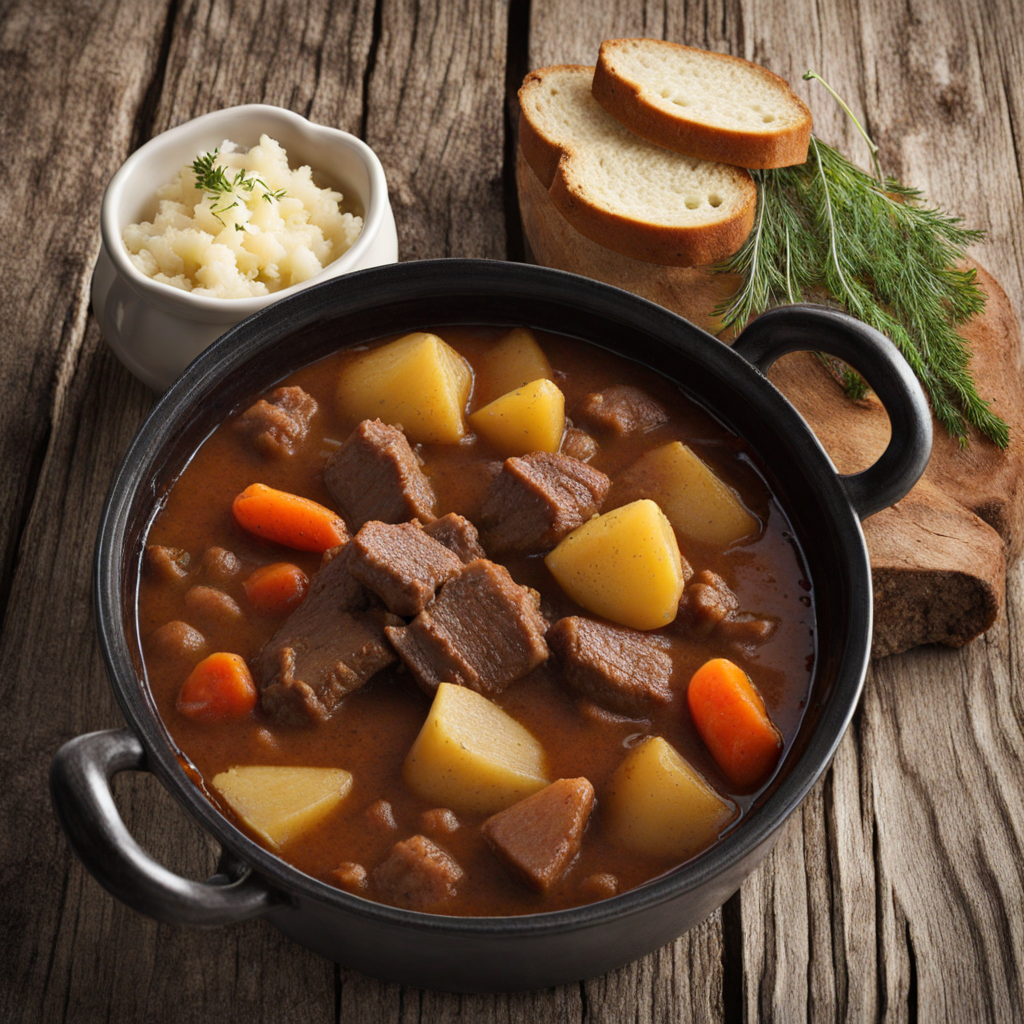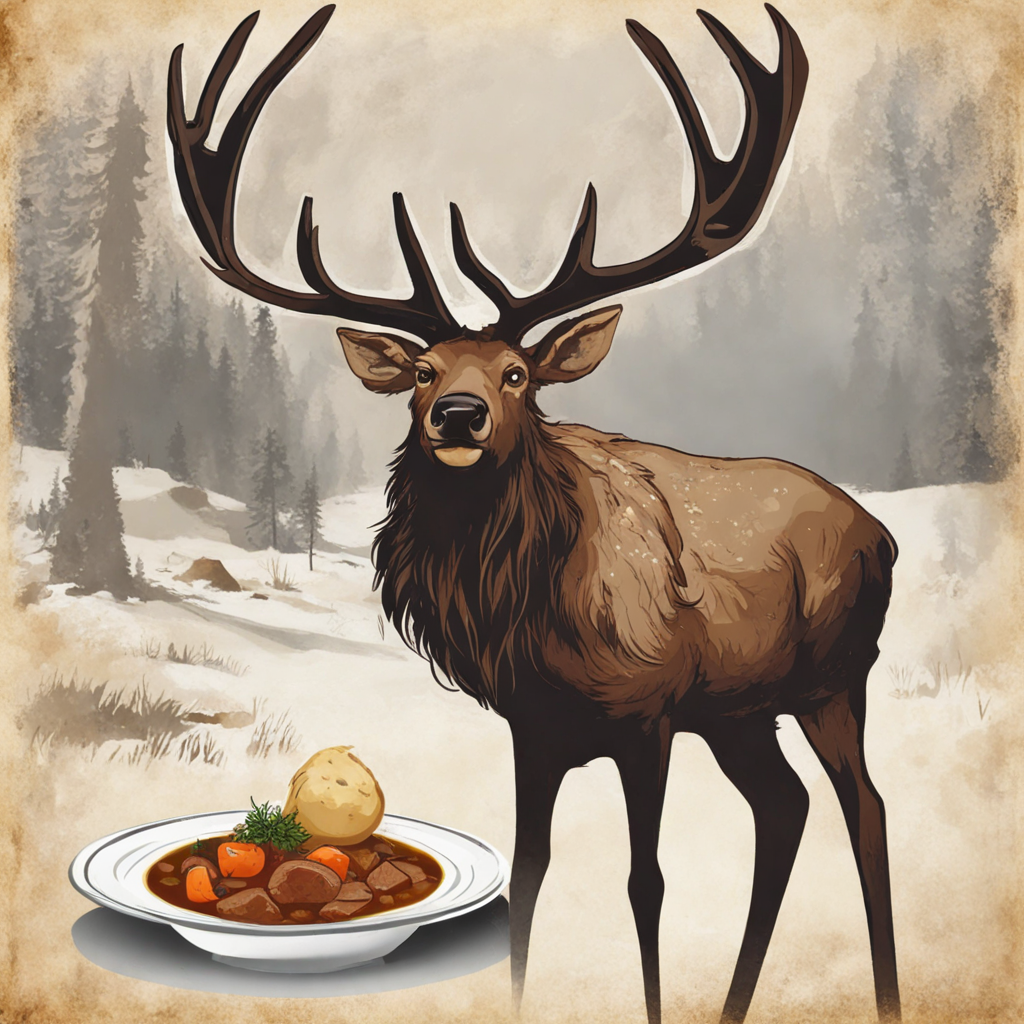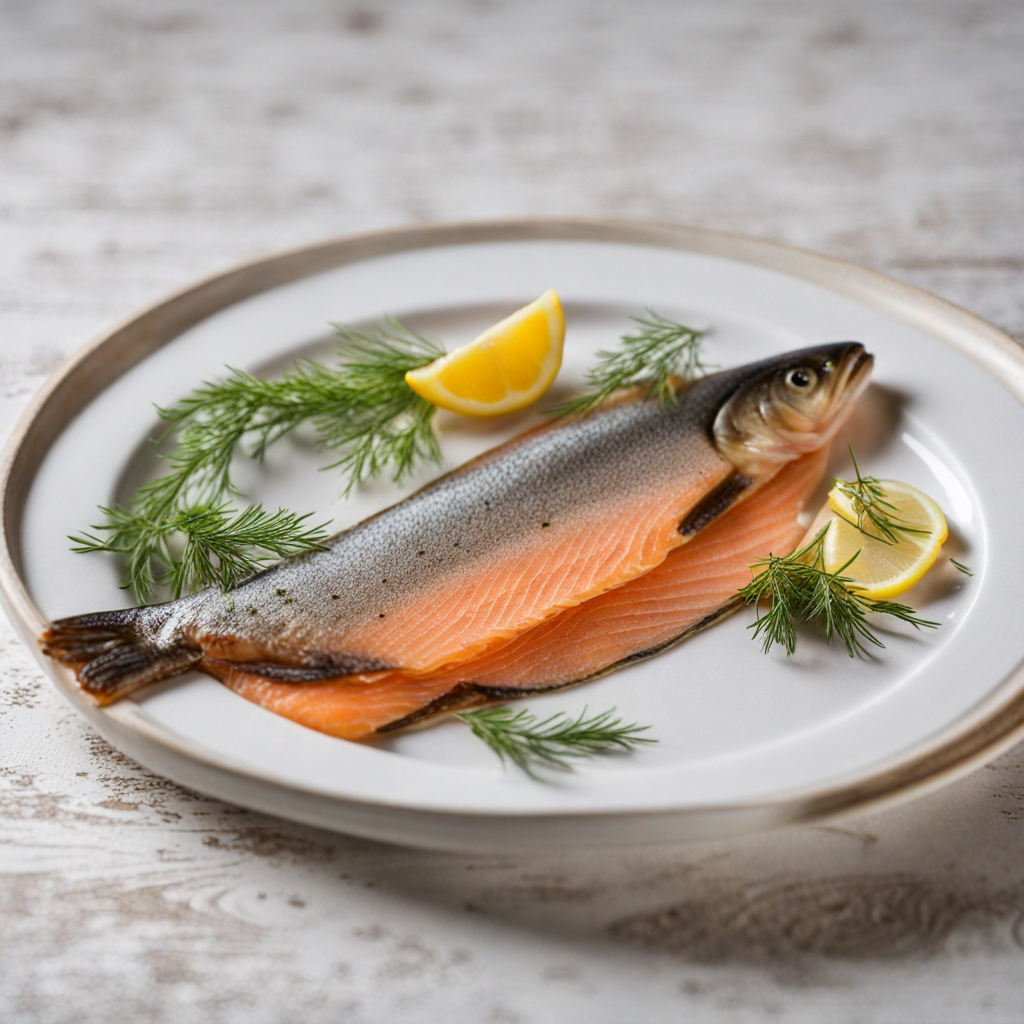Elk Stew
Elk stew is a hearty and flavorful dish that embodies the rich culinary traditions of Estonia. Made with tender cuts of elk meat, this stew is typically simmered slowly to enhance the natural flavors of the meat, allowing it to become incredibly tender. The elk, known for its gamey taste, is complemented by a medley of root vegetables such as carrots, potatoes, and parsnips, which add a subtle sweetness and earthiness to the dish. The slow cooking process allows these ingredients to meld together, creating a comforting and robust flavor profile that warms the soul, especially during the colder months. Herbs and spices play a crucial role in elevating elk stew. Commonly used seasonings include bay leaves, black pepper, and juniper berries, which provide a fragrant aroma and a unique depth of flavor. Some variations may include a splash of Estonian beer or a hint of sour cream to add richness and complexity. The stew is typically served with a side of dark rye bread, which is perfect for soaking up the savory broth, making each bite a delightful experience. This dish is not just about taste; it also tells a story of Estonian culture and the importance of nature in local cuisine. Cooking elk stew is often a communal activity, bringing families and friends together to share in the preparation and enjoyment of a meal that connects them to their heritage. When you take a spoonful of this stew, you taste the wild landscapes of Estonia and the tradition of utilizing local ingredients, making elk stew a truly unique culinary experience waiting to be discovered.
How It Became This Dish
Hirveliha Hautis: An Engaging History of an Estonian Delicacy #### Origins and Ingredients Hirveliha hautis, or elk meat stew, is a traditional Estonian dish that has deep roots in the country’s history, geography, and culture. Estonia, a small Baltic nation bordered by the Gulf of Finland to the north and the Baltic Sea to the west, is characterized by its lush forests, abundant wildlife, and a rich tapestry of agricultural practices. The ingredients used in hirveliha hautis are a reflection of this unique environment. The main star of the dish is elk, a majestic creature that roams the Estonian woods, symbolizing both the natural bounty of the land and the skills of the local hunters. Elk meat has been consumed in Estonia for centuries, historically associated with survival and sustenance. The indigenous Finno-Ugric peoples, who inhabited the region long before modern Estonians, relied on hunting and foraging as primary means of obtaining food. The elk, being a large and powerful animal, provided a substantial source of protein for families, and its meat was often preserved through drying or smoking for use in the winter months. The word "hautis" itself translates to "stew" in Estonian, indicating a cooking method that has been prevalent in the region for generations. Stewing is an ancient culinary technique that allows for the melding of flavors and the tenderization of tougher cuts of meat, making it an ideal method for preparing elk, which can be lean and gamey. #### Cultural Significance Hirveliha hautis holds a special place in Estonian culture, particularly in the context of family traditions and seasonal celebrations. It is often served during winter months, especially around Christmas and other festive occasions. The dish embodies the spirit of communal gatherings, where friends and family come together to share a meal that is both hearty and nourishing. In Estonian folklore, elk is sometimes perceived as a mystical creature, embodying strength, resilience, and a connection to the natural world. This reverence for elk and the practice of hunting them are intertwined with the cultural identity of Estonians, who have historically celebrated the changing seasons with festivals that honor nature and the cycles of life. In this context, preparing and sharing hirveliha hautis is not just about food; it’s an act of remembrance and appreciation for the land and its resources. Moreover, the dish reflects the broader culinary traditions of Estonia, which have been influenced by various cultures over the centuries. From the German and Swedish occupations to the Russian Empire, each phase of history has contributed to the evolution of Estonian cuisine. Hirveliha hautis, with its simple yet robust flavors, is emblematic of the Estonian ethos of using natural ingredients and traditional methods to create comforting and satisfying meals. #### Development Over Time As Estonia evolved through the 20th century, particularly following its independence from Soviet rule in 1991, there was a resurgence of interest in traditional Estonian foods, including hirveliha hautis. This revival was part of a broader cultural movement to reclaim and celebrate national identity, where traditional dishes served as a means of connecting with the past while promoting local ingredients and sustainable practices. In contemporary Estonia, hirveliha hautis is often prepared with a variety of local vegetables, such as potatoes, carrots, and onions, which enhances the dish’s nutritional profile and adds depth to the flavor. The incorporation of herbs like thyme and bay leaves, as well as the use of local Estonian spices, showcases the culinary creativity of modern Estonian chefs while maintaining respect for traditional methods. Moreover, the popularity of hirveliha hautis has transcended the boundaries of home kitchens. Today, it can be found on the menus of restaurants across Estonia, especially those focusing on farm-to-table concepts. Chefs are exploring innovative twists on classic recipes, incorporating elements of modern gastronomy while still honoring the dish’s heritage. Some may even serve it alongside contemporary side dishes or artisanal breads, bridging the gap between past and present in a way that resonates with both locals and visitors. In recent years, there has also been a growing interest in hunting and foraging in Estonia, partly spurred by sustainability movements. This resurgence has led to more home cooks experimenting with elk meat and preparing their own versions of hirveliha hautis, further embedding the dish into the fabric of Estonian domestic life. Workshops and cooking classes focused on traditional Estonian cuisine often include this dish, teaching participants about its historical roots and the importance of local ingredients. #### Conclusion Hirveliha hautis is more than just a delicious elk meat stew; it is a reflection of Estonian cultural heritage, a symbol of community and tradition, and a testament to the relationship between the people and the land. As Estonia continues to navigate its identity in a modern world, dishes like hirveliha hautis serve as a bridge between the past and the present, reminding us of the importance of honoring our culinary roots while embracing innovation. In every bowl of this hearty stew, one can taste the history and stories of the Estonian people—a narrative of survival, celebration, and community that has been passed down through generations. As such, every serving of hirveliha hautis is not just a meal; it is an experience that nourishes the body and soul, connecting those who share it back to the heart of Estonia and its rich culinary traditions.
You may like
Discover local flavors from Estonia







